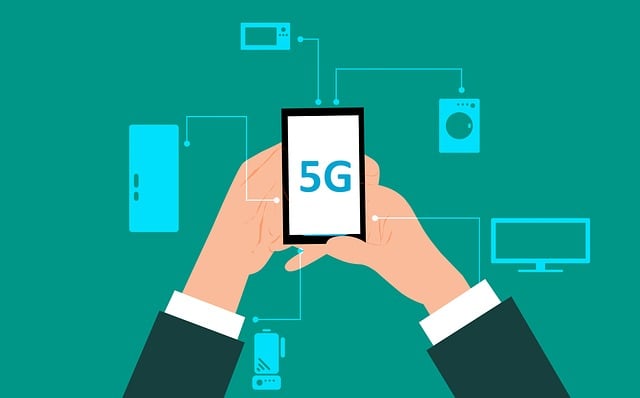Wireless access cabling is crucial for modern networking, enabling high-speed Ethernet connections. Choosing the right cable type (Cat5e, Cat6, Cat6a), length, and installation methods optimizes signal integrity, bandwidth, and network efficiency. High-Speed Ethernet serves as a foundation for strong wireless infrastructure, supporting fast speeds and higher bandwidth demands. Integrating Cat6a or Cat7 cables enhances network performance, coverage, and user experience, facilitating future technological advancements in wireless access cabling. Regular updates ensure robust, efficient wireless networks capable of meeting business technology demands.
In today’s digitally driven world, high-speed Ethernet cabling is no longer a niche concern but a cornerstone of robust wireless infrastructure. As organizations strive for seamless connectivity, understanding the intricacies of wireless access cabling becomes paramount. This article delves into the crucial role of High-Speed Ethernet, exploring its fundamental place in achieving exceptional wireless performance. From grasping specific cabling requirements to integrating systems for optimal functionality, we provide implementers with insights and best practices.
Understanding Wireless Access Cabling Requirements
Wireless Access Cabling is a critical component in modern networking infrastructure, enabling seamless connectivity for both wired and wireless devices. To support high-speed Ethernet connections, it’s essential to understand the specific requirements of wireless access cabling. This includes the need for reliable, low-loss transmission media capable of handling high data rates.
When implementing or upgrading wireless networks, consider factors like cable type (Cat5e, Cat6, Cat6a, etc.), length, and installation methods. These choices directly impact signal integrity, bandwidth availability, and overall network performance. Ensuring optimal cabling practices for wireless access points and endpoints is vital to achieving the desired speed and stability in your Ethernet-supported wireless infrastructure.
High-Speed Ethernet: A Foundation for Wireless Excellence
High-Speed Ethernet serves as the bedrock for any robust wireless infrastructure. By providing a reliable and high-capacity data transfer pipeline, it ensures that wireless access points can operate at their fullest potential. When implementing or upgrading wireless networks, utilizing High-Speed Ethernet cabling is pivotal to supporting faster speeds, higher bandwidth demands, and more efficient connections. This technology enables the seamless integration of both wired and wireless devices, fostering a cohesive network environment.
In terms of wireless access cabling, High-Speed Ethernet cabling options like Cat6a or Cat7 offer superior performance and extended reach, allowing for the deployment of advanced wireless standards such as 802.11ax (Wi-Fi 6). These cables are designed to minimize signal loss and interference, ensuring that wireless signals remain strong and stable across larger areas. By investing in High-Speed Ethernet infrastructure, organizations can future-proof their networks, prepare for the growing demand of data-intensive applications, and ultimately enhance the overall user experience for both wired and wireless devices alike.
Integrating Cabling for Seamless Connectivity
Integrating high-speed Ethernet cabling into a wireless infrastructure is a strategic move that ensures seamless connectivity for users and devices across all network segments. Wireless access points (WAPs) rely on robust backhaul connections to deliver optimal performance, low latency, and reliable data transfer rates. By employing advanced Ethernet cabling standards, such as Cat6a or higher, IT professionals can meet the demands of modern wireless networks that support high-density user environments and sophisticated applications.
This integration offers several advantages. It enhances network coverage by providing a stable physical connection for WAPs, eliminating signal interference from moving objects or dense obstacles. Moreover, Ethernet cabling facilitates faster data transmission rates, enabling users to enjoy seamless streaming, video conferencing, and other bandwidth-intensive activities without disruptions or delays. In essence, well-designed wireless infrastructure that incorporates high-quality Ethernet cabling is pivotal in creating a reliable, performant network ecosystem.
Benefits and Best Practices for Implementers
Implementing high-speed Ethernet cabling to support a robust wireless infrastructure offers numerous benefits for businesses and organizations. Firstly, it ensures reliable and consistent connectivity, which is essential for seamless wireless access. High-speed cabling provides the backbone for efficient data transmission, enabling faster network speeds and improved performance for users accessing wireless networks. This is particularly beneficial in dense environments with many devices connected simultaneously.
When deploying such systems, best practices should be followed. Implementers should carefully plan the cable layout, considering factors like distance, interference, and future expansion. Using high-quality cables and connectors ensures optimal signal integrity and minimizes signal degradation. Additionally, proper labeling and documentation of the cabling system are crucial for easy maintenance and troubleshooting. Regular checks and updates to the wireless access cabling infrastructure can help organizations keep up with evolving technology demands.
High-speed Ethernet cabling is a cornerstone in building robust wireless infrastructure. By understanding the specific requirements of wireless access cabling, implementing high-performance Ethernet solutions, and integrating these systems seamlessly, organizations can achieve unparalleled connectivity. The benefits are clear: improved network performance, enhanced user experience, and a more adaptable, future-proof network architecture. For implementers, adhering to best practices ensures optimal results, ensuring every aspect of the network is optimized for seamless wireless access cabling.
